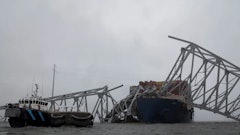Construction contractors typically secure commercial general liability (CGL) insurance policies and assume that these policies address all of their risks. However, these CGL policies may not always apply or cover all risk scenarios that a contractor may face in a construction project. In fact, there are a variety of instances in which CGL policies may not provide the protection contemplated by a contractor. Let's discuss a few.
Consider a catastrophic structural failure during construction that kills several and seriously injures multiple other workers. No surprise, a lawsuit is filed for property damages and bodily injury against the owner, general contractor, and subcontractors on both the build and design sides of the project. Assume that the contractor has a CGL policy providing $10 million in coverage, and that the project is covered by $30 million under an owner-controlled insurance policy (OCIP).
Our hypothetical contractor may assume that he has coverage in the amount of $40 million. Let's examine that assumption:
Most CGL polices have a variety of exclusions. One common exclusion disclaims any coverage when the insured (here, the contractor) is working on a project covered by a separate owner-controlled policy. This increasingly common exclusion does not mean that the owner's policy provides a defense and pays indemnity until exhausted, after which the hypothetical contractor's CGL policy kicks in. Rather, it means that, the CGL policy is never triggered, regardless of what happens under the owner's policy. It's as if the CGL policy doesn't exist. This is not a pleasant scenario, especially when the monies available under the OCIP have already been expended for the benefit of several sued entities but the case is not entirely resolved.
Another coverage issue for contractors to consider is one that arises even when there is no owner's policy exclusion in the CGL. For example, the CGL policy may be structured in such a way that incurred defense costs will erode the available policy limits; this is sometimes referred to as a "wasting" policy. For example, the CGL policy might provide $10 million in coverage, but the insurer ends up paying $3 million to defend the case. That would leave the contractor with $7 million in coverage to settle the case or satisfy a judgment, exposing the company to liability for any excess amounts. This is another unfortunate outcome, especially if the contractor didn't understand this risk from the start.
Additionally, contractors whose responsibilities on a site include transportation must make sure that they have obtained separate coverage to ensure against certain accidents. CGL policies often exclude coverage for damages resulting from automobile, aircraft, or watercraft accidents. Contractors who transport items to, from, or within construction sites may need to purchase additional coverage to protect against such risks.
Contractors should keep in mind that CGL policies typically do not cover damage to property belonging to or in the care, custody, or control of an insured contractor. For example, let's say lightning damages the contractor's crane. Most CGL policies will exclude coverage for that risk. To be covered against such damage to its property, a contractor often must obtain separate property loss insurance. The scope and cost of these policies varies depending on what risks are covered, and a contractor should carefully consult with its insurance professional to determine what property loss protection is needed.
Injured workers present yet another coverage variable. Worker's compensation laws prevent injured employees from suing their employers because their exclusive remedy is to obtain worker's compensation payments. This is a favorable rule when the contractor in question is the employer of the injured person. However, there are often times when the contractor is not the employer, but has been sued for damages stemming from an accident that occurred to another's employee. The ban on employer suits often results in injured workers suing every contractor on the site, when the real fault lies with the untouchable employer. While a contractor will typically be covered for such damages under its CGL policy, the worker's compensation bar complicates a contractor's coverage position and increases the risk of exposure unless the contractor has secured clearly written (where applicable) defense and indemnity obligations from the injured party's employer.
Clearly, different scenarios can affect the duties and dollars owned to a contractor by its insurance carrier or other contractors. These CGL policies contain numerous exclusions, and there is a trend of insurers providing ever-narrowing coverage to contractors. It is important to avoid making assumptions, and to ask questions of your insurance professional to ensure that you are appropriately and fully covered on each unique job. One must also make sure that all applicable contracts between the various contractors and subcontractors are reviewed by professionals so that defense and indemnity provisions accurately and completely identify who is responsible for those duties and obligations.
Taking the time to do your homework will ensure that you are fully prepared and covered for any surprises (and there are always surprises) that might arise at the construction site.
John F. Mullen is co-chair of the construction industry practice group at Cozen O'Connor, one of the 100 largest firms in the country. He has litigated high profile construction disasters, including two separate New Jersey Tropicana Casino garage collapses and a variety of other construction failure cases. Cozen O'Connor member David A. Shimkin also works on construction-related cases as part of his practice. For more information, contact Mullen at 215-665-217/ [email protected] or Shimkin at (212) 509-9400 [email protected] .


























